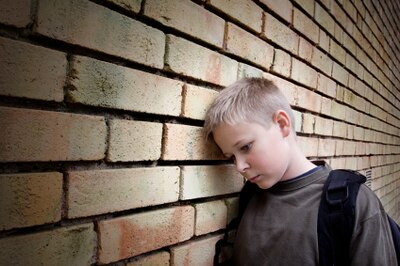Q. I’m an elementary school counselor. A teacher asked me for advice on how to communicate with the parents of the child who is doing the bullying to make them aware that it’s happening. I am wondering how to handle this and follow up, especially when the parents are in denial. Do you have any suggestions?
A. Thank you for turning our attention to the other ‘victim’ of bullying – the child who does the bullying.

Bullies and their victims often have one thing in common – neither have many friends. Why? Some lack friends because of social skills deficits or impaired pragmatics (joining and participating in social exchanges). Others have skills, but suffer from social anxiety and inhibition. Still others lack friends because of distorted thinking about self and others. Children in this latter group often see hostile intention in other children or act to punish the vulnerability in others they experience within themselves. None of these children are likely to attract friends, and they end up being left out. By default, these two very different types of children often find each other in the roles of victim and bully.
This ying-yang nature of victim/bully relationships explains re-victimization as well as the long-term potential for children who bully to grow into adult offenders. It is also a good place to start your discussion with the parent of a child who bullies.
Here are some guidelines:
- Be specific and descriptive in providing the parent the facts of his/her child’s anti-social behavior. Use the term ‘bully’ or ‘bullying,’ sparingly. Instead, describe clearly the behavior of concern. Providing this information in writing may be helpful.
- Provide your observations and impressions of the social difficulties his/her child is experiencing. Describe the ‘bullying’ behavior as something his/her child must overcome in order to succeed in school and in life. Convey concern about the child who is behaving anti-socially, and demonstrate a willingness to help.
- Clearly communicate the desired change in behavior. Some behaviors clearly must cease, but other pro-social behaviors must take their place. If not, the anti-social behavior is likely to re-emerge with new victims. Is there an adult at the school who can ‘mentor’ the child? Are there structured group activities available to support and foster pro-social behavior? Be creative, but keep in mind that it is not enough to just stop bullying, – you must also state positively the direction needed for healthy peer relationships.
- Finally, you must begin to form an alliance with the parent. By this time, you should have a sense of who they are and how they are likely to react or respond.
Consider parenting styles
There are two parenting styles that often coincide with the development of anti-social or bullying behavior in children.
The first is an authoritarian style. This parent rigidly enforces compliance, and may use shame, humiliation, verbal abuse, and corporal punishment to force children to conform to their expectations. These types of parents are likely to feel ashamed and may become angry when confronted. With such parents, encourage an open mind and elicit a commitment to refrain from becoming angry with his/her child and to work with you to make things better.
The second parenting style is the permissive-neglecting type. These parents are disengaged from the lives of their children and often have minimal motivation to help. They may dismiss your concerns or nod their heads in acquiescence. With these parents, it can be helpful to explain that they can pay now or pay later. In other words, helping their child now will be easier than waiting until things get worse.
Let us know how things go.
Editor’s note: Check out Kevin’s original response to a question from a mom whose son – a student new to the school – was being bullied in the lunchroom. And here’s another expert’s take on the lunchroom bullying question.
About our First Person series:
First Person is where Chalkbeat features personal essays by educators, students, parents, and others trying to improve public education. Read our submission guidelines here.
